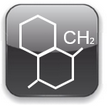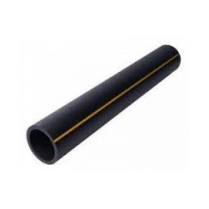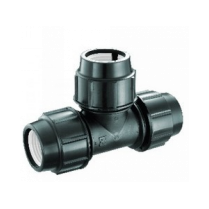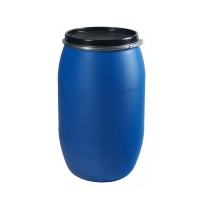High density polyethylene
Thermoplastics > Polyolefins > Polyethylene
| HDPE | |
HDPE is a partially amorphous and partially crystalline thermoplastic material. The degree of crystallinity depends on the molecular weight, the amount of comonomer present and the applied heat treatment. The HDPE macromolecules are essentially linear, with less than one branch per 200 carbon atoms in the main chain. As a consequence of the linearity of the chain, they do reach high degrees of crystallinity that determine the highest and lowest permeability of all kinds of polyethylenes. HDPE, high density polyethylene: polymer with highly linear chain that gives rise to a polymer in solid state with high degree of crystallinity (up to 80%). Its melting temperature, Tm, is equal to 135 ° C. High density polyethylene (HDPE) is normally produced with a molecular weight that is in the range between 200,000 and 500,000, but may be higher. It has better mechanical properties (rigidity, hardness and tensile strength) and better chemical and thermal resistance than low density polyethylene, due to its higher density. It is also resistant to low temperatures, impermeable, inert (to the content), with little dimensional stability and non-toxic. For blow molding applications, HDPE resins offer an excellent combination of stiffness and tear resistance, which makes them the materials of choice for various applications in the personal care, household, industrial packaging and bottles sectors, HDPE resins are also counted for film applications that require stiffness and moisture barrier. | |
Proprierties | |
| |
| Polymerization | |
The high density polyethylene is synthesized by polymerization of Ziegler-Natta. It is a catalytic polymerization process (Ziegler-Natta catalyst) at low pressure (the manufacturing pressure of the HDPE is below 14 MPa). When ethylene is injected into a suspension of aluminum ethylate and titanic ester in an oil, the ethylene is polymerized with heat evolution, which is absorbed by the solvent, and forms a macromolecular product. It can also be obtained with the polymerization of ethylene at relatively low pressures, with a metal oxide on silica or alumina as a catalyst. Gas phase The gas phase polymerization begins with the direct feeding of ethylene, which must be of high purity (approximately 99.8%), and the catalyst powder (chromium modified with silica). Both feed continuously and Polyethylene is intermittently dislodged from the reactor, through a chamber with seal for gases. The molecular weight distribution of HDPE is largely controlled by the type of catalyst used in the polymerization and by the type of manufacturing process employed. Among the catalysts used to obtain High Density Polyethylene are the following: Ziegler catalyst - Natta Metallocene catalyst |  |
Applications | |
HDPE has many applications in the current industry. More than half of its use is for the manufacture of containers, lids and closures; another large volume is molded for domestic utensils and toys; An important use that it has is for pipes and ducts. Its use for packaging has increased due to its low cost, flexibility, durability, its ability to withstand the sterilization process, and resistance to many chemicals. Among many other products in which the HDPE is used, we can name lube oil cans (automotive) and for organic solvents, cutter handles, gas tanks, milk bottles, plastic bags and toys. For the manufacture of hollow articles, such as bottles, a process similar to that of glass blowing is used. Compression molding and shaping of previously formed sheets are also used. |





